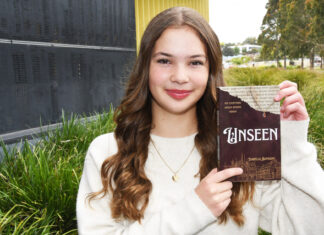CARDINIA Shire’s chief executive is calling on the State Government to reclassify the shire’s outer areas as rural, saying the present metropolitan status is depriving farmers, businesspeople – and the council – of millions of dollars each year.
Garry McQuillan says it’s a joke that the shire’s regional pockets – including Bunyip, Kooweerup and Lang Lang – aren’t considered rural, and will meet Spring Street heavyweights this month in a bid to have that changed.
Funding in those outer townships for schools, doctors and road and rail projects may be bolstered if Mr McQuillan is successful in his quest.
He says he hopes the “inequity” will be turned around so that rural people, farmers in particular, can access more government grants.
The Cardinia Shire is 1280 square kilometres, but just 7 per cent of that area is within the Urban Growth Boundary (UGB).
While Mr McQuillan said he had no problems with Spring Street classifying Pakenham, Officer and Beaconsfield, towns in the UGB, as metropolitan it was “comical” that the shire’s 27 rural communities were in the same category.
“If you live in Bayles or Bunyip, you’re classified as metropolitan, which is a joke,” Mr McQuillan said.
Cardinia Shire mayor Bill Pearson agreed.
“We don’t expect rural funding for the growth corridor, it’s the small towns outside it,” he said. “There are just so many grants we miss out on – it’s incredible.
“It’s not just the council, its schools and our citizens. With each passing year the gap between us and the rural shires is growing.”
Ian Anderson, president of the Victorian Farmers Federation’s Cardinia branch, also said the classification was unfair.
“It’s disappointing – it’s an area that has frustrated for us for many years,” he said.
“Ninety-three per cent of Cardinia Shire is rural … there’s a fair area which is certainly not metro by any stretch.”
Mr Anderson said farmers were missing out on substantial grants for cattle underpass funding and road widening because of the shire’s metropolitan classification. He said he raised these issues during a parliamentary inquiry into farming in Melbourne’s interface shires, recently held in Pakenham.
“From a safety and community point of view, it’s appropriate that funding is made available when the need arises,” Mr Anderson said.
The Interface Council group, which is made up of councils on the fringe of metropolitan Melbourne, including Cardinia, is fighting to have classifications based on the UGB, as defined in Melbourne 2030, rather than municipal boundaries.
A spokesman from the Department of Planning and Community Development (DPCD) said that although the Cardinia Shire Council was within the metropolitan boundary of Melbourne, the department recognised it contained many rural landscape features and characteristics. The spokesman said this was why much of the shire was green wedge.
“Many townships within the shire are not the same as suburban areas of Melbourne, that is why the department is prepared to appropriately consider the future development of these townships in line with their status as declared growth areas,” he said.
Get the latest news to your email inbox FREE!
REGISTER




